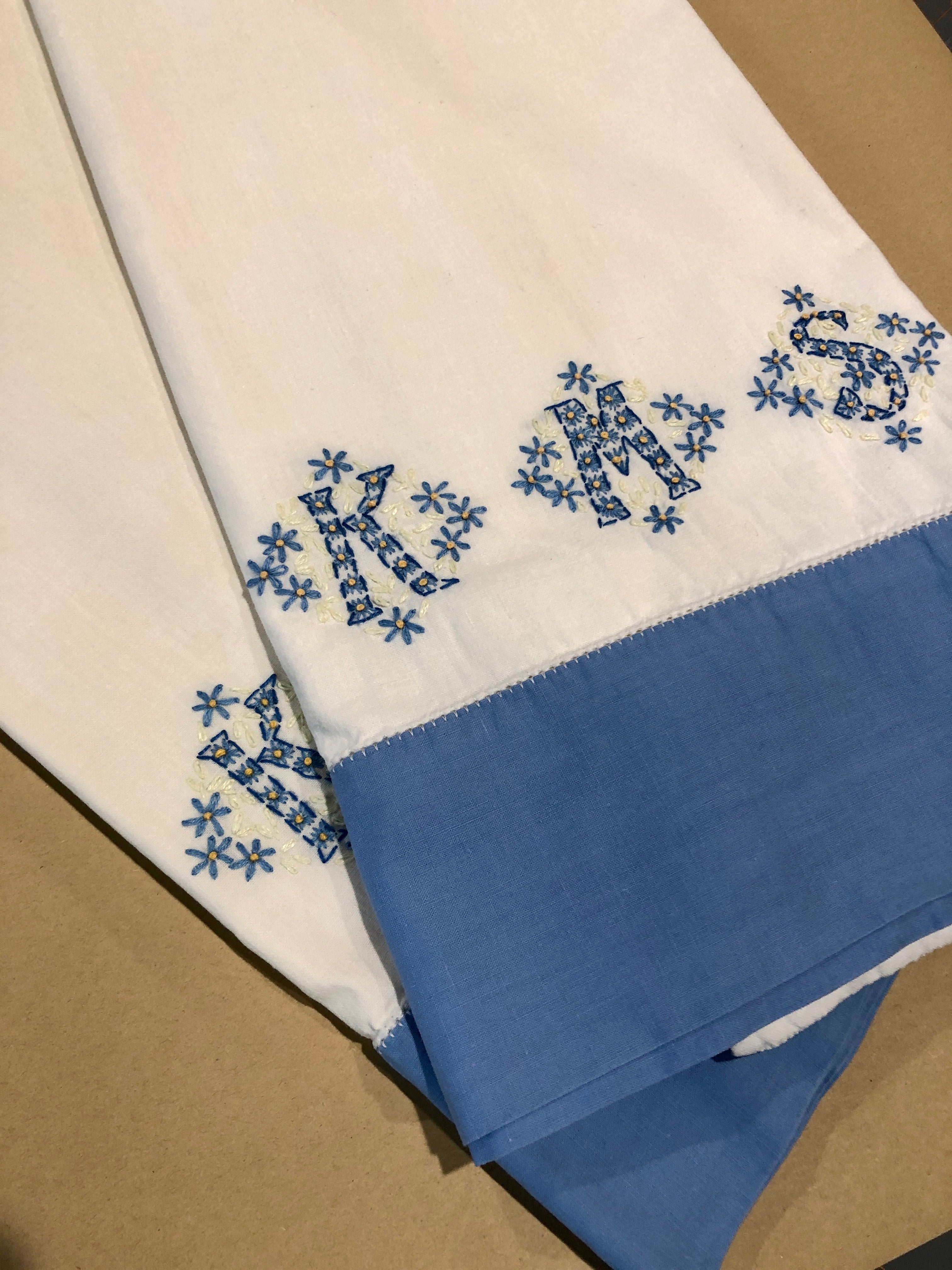As a creative, and a dedicated up cycler, I have newfound appreciation for vintage linens. Vintage linens have handmade features you simply can't find in mass produced bedding. They were constructed at a time when quality was important as individuals and families valued their bedding as long-term heirlooms to be cherished, whether a gift, as part of a dowery, or homemade. With holidays approaching, I'm already hunting for gifts for like-minded friends and family. The uniqueness of heirloom linens can make a special gift for those who appreciate them.
Recently, I found a pair of embellished pillowcases; cross-stitched with initials and added decoration. I found them in a thrift store for a couple of dollars. I washed them in gentle cycle in my washing machine to clean them. Then, I pressed each pillowcase and now they are ready for gift giving. I store them with dried lavender sachets before holiday wrapping.
The thought of pre-owned linens not your thing? Think again. In case you were wondering why you might consider collecting and using heirloom linens, here are some facts:
- The fashion industry is one of the biggest in the world, accounting for 2% of global Gross Domestic Product (GDP). Unfortunately, it’s also now one of the biggest polluters in the world—second only to oil. Globally, we consume about 80 billion new pieces of clothing every year—400% more than we were consuming just two decades ago.
- Paradoxically, the more we love buying clothes, the more we seem to love either not wearing them or disposing of them—the average UK shopper only wears 70 per cent of what’s in their wardrobe and throws out 70 kilograms of textile waste annually. The U.S. is even worse.
- "Fast fashion" is harmful from a social perspective, too. According to an April 2016 Oxfam report, more than 60 million people work in the garment industry to fuel fast fashion: more than 15 million of those are based in Asia and more than 80% are women, often young and from poor rural backgrounds. Source: The University of Queensland
- The fashion industry consumes one tenth of all of the water used industrially worldwide to run factories and clean products. To put this into perspective, it takes 10,000 liters of water to produce one kilogram of cotton or approximately 3,000 liters of water for one cotton shirt. (Think about that the next time you are browsing the mall!)
- Furthermore, textile dyeing requires toxic chemicals that subsequently end up in our oceans and polluting this valuable ecosystem. Approximately 20% of the wastewater worldwide is attributed to this process, which accumulates over time. As many factories moved overseas as stated previously, they may be in countries without strict environmental regulations, resulting in untreated water to enter the oceans. Regrettably, the wastewater created is extremely toxic and, in many cases, cannot be treated to become safe again.
- Most fast fashion is made of synthetic materials. Synthetic materials are the primary culprits that cause plastic microfibers to enter our oceans. To be exact, approximately 35% of all microplastics are from these synthetic materials. To further lower the price, producers turn to materials that may be of low quality. For example, many of the fibers are made of polyester, consisting of plastic and tend to release far more carbon emissions than cotton. Furthermore, plastic is slow to degrade in the ocean until a long time has passed. When plastic finally breaks down, it creates a toxic substance with a harmful impact on the marine ecosystems. As these plastic microfibers cannot be removed, they end up in the human food chain through aquatic life, causing many negative health effects on those of buying the darn fast fashion. There are a variety of ways they can enter our ocean - most commonly from our usage of the washing machine. Source: PSCI Princeton University
I’m not abdicating eliminating the joy of a new outfit however I am thinking about the impact I personally make and how I can reduce my impact. One way I can do this is to share the importance of vintage linens. And who knows, maybe you have some wonderful family heirlooms lurking somewhere in your home or your grandparents’ home. Why not use these beautiful materials as your way to make a difference?
I've posted the links to the sources I've cited below if you are interested in reading more:
https://sustainability.uq.edu.au/projects/recycling-and-waste-minimisation/fast-fashion-quick-cause-environmental-havoc
https://psci.princeton.edu/tips/2020/7/20/the-impact-of-fast-fashion-on-the-environment








